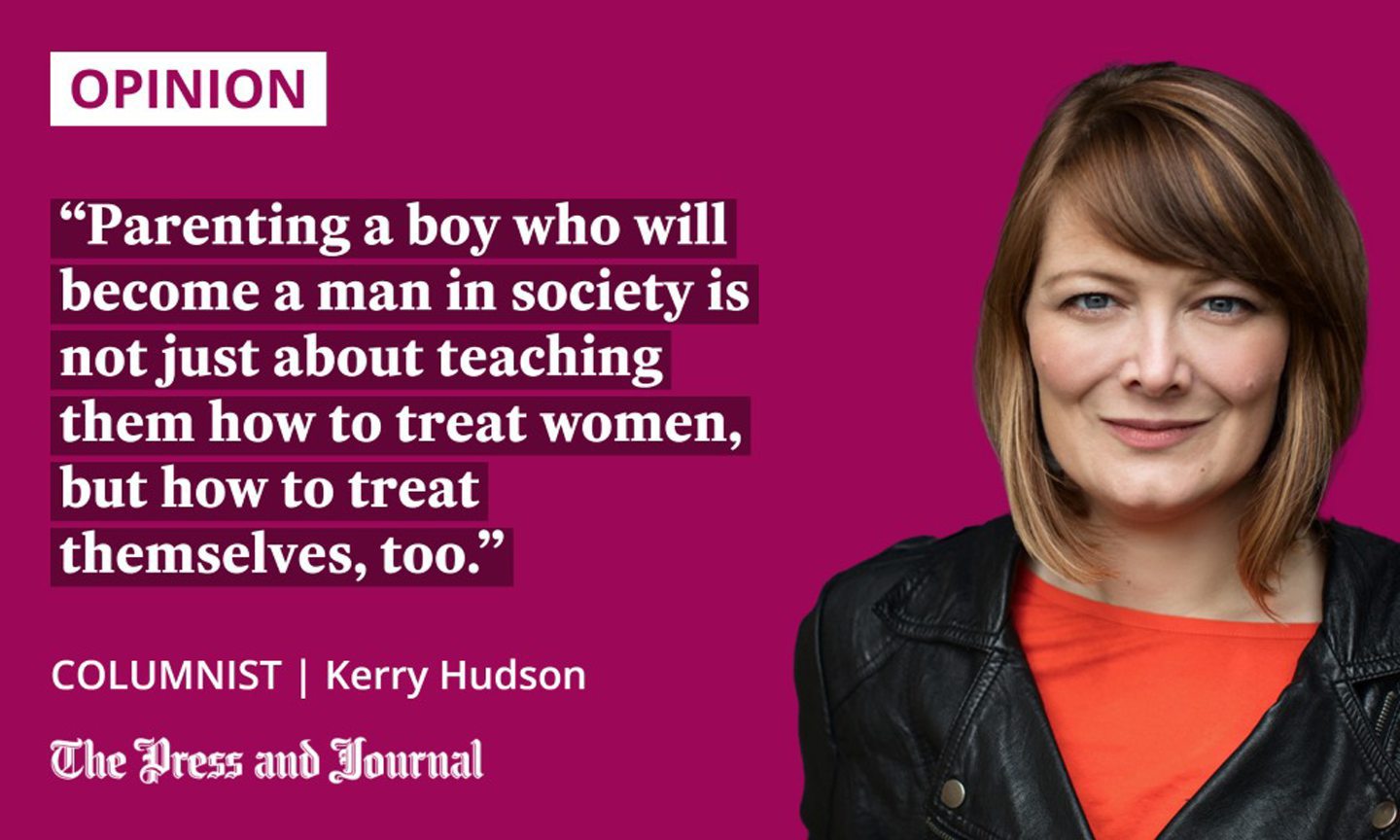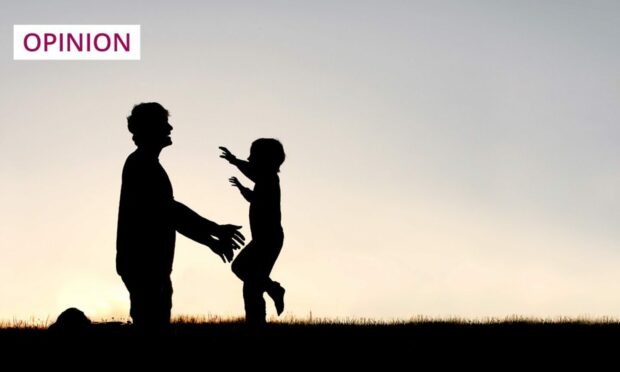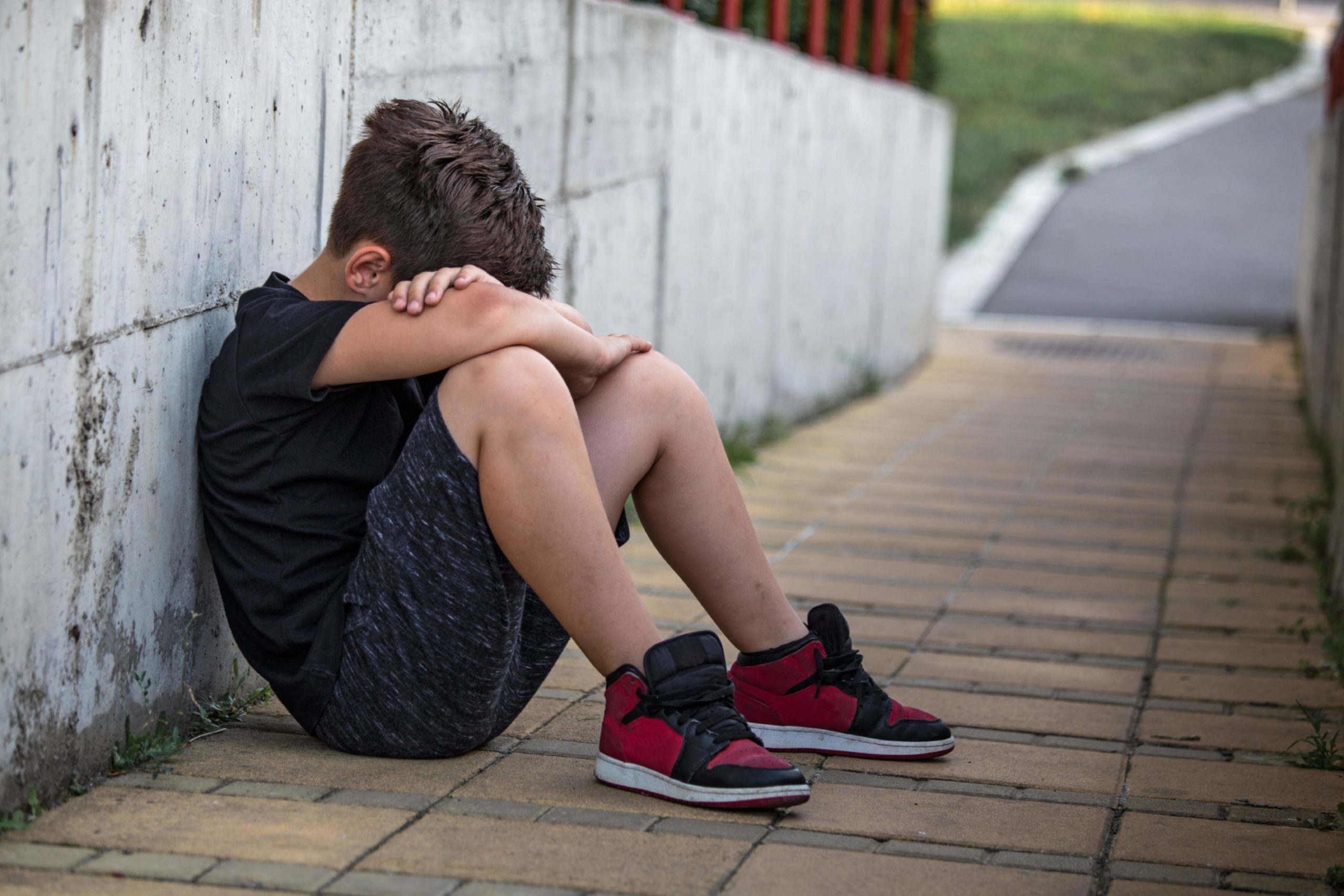We can raise our sons differently to the men who came before them, and change society for the better as a result, writes Kerry Hudson.
I’m twirling my two-year-old son around under a silk rainbow parachute. Above our heads, the air is full of bubbles, and S Club 7’s Reach is playing on the stereo.
I spin my wee boy amongst the chaos of 15 toddlers and 15 tired parents, hitting the church hall dance floor like it’s a payday Friday night.
My little boy stares up to the parachute, holds his arms aloft, shouts: “pink, pink, pink!”, then shimmies himself from my arms, runs to the centre of the crowd and bops away in deep, unselfconscious joy.
I am almost in tears as I watch him, and hope in that moment that he will always be so completely unaffected by the expectations of adulthood and manhood. That’ll he’ll remain in touch with his emotions, delighted to declare his happiness.

I remember being relieved when I discovered I was having a boy. I found out by email attachment. At 39 years old, I was classed as a “geriatric mother”, with an increased likelihood for complications.
So, I sent off a perilously expensive blood sample and got back a brief note saying everything was fine, with a blue-hued little circle and arrow at the top, telling me I was bringing another man into the world.
I was relieved because I realised that my little boy wouldn’t have to grow up with the things that I had grown up with as a woman: the increased threat of sexual and physical violence; impossible body standards; deep, systemic inequalities that affect everything from my healthcare to my salary.
We are in the midst of a male mental health crisis
I told myself this was our opportunity to change things. We’d raise not just a good person, but a good man. We’d raise a feminist.
However, once I had my little boy, I understood that life wasn’t going to be so simple for him. I realised that parenting a boy who will become a man in society is not just about teaching them how to treat women, but how to treat themselves, too. Because we are in the midst of a male mental health crisis.
Gregor from The Changing Room shares his top tips when you #AskThem about suicide.
🟡 Find a safe space
🟡 Be an active listener
🟡 Try not to interrupthttps://t.co/TQEXFTsjgX pic.twitter.com/EniGysQi1n— SAMH (@SAMHtweets) January 18, 2023
Just under three quarters of all suicides in Scotland are male, and almost half (46%) of those men are, heartbreakingly, aged 35 to 54.
I look at my own, brilliantly, completely-himself, little boy who hasn’t yet learned any rules for how he “should” be, and I wonder how I can protect him from the crushing expectations that the men I grew up with faced. That 1980s and 1990s model of masculinity, where every man must be a hard man. A toxic masculinity that says crying is for sissies, or showing vulnerability is soft.
I grew up with angry, violent men
I recently recorded a podcast at home with fellow Press and Journal columnist, Darryl Peers. As we were wrapping up, my wee boy and husband came tumbling in from the cold, mid-tantrum (my kid, not my husband).
Darryl, very, very gently, said to my little boy: “Sometimes it’s good to cry. It’s OK to cry.” Somehow, he had found the perfect thing to say.
So much of raising a boy, I think, is teaching him to express and care for himself. Letting him know that he doesn’t have to be tough, and that whatever he wants to pursue is valuable, even if it turns out to be something very different from the norm.
As a child, I don’t think I ever lived in a flat without a flimsy wall or a door with a hole in it from some man’s big fists trying to punch the hurt out of themselves
I am lucky that my son has the model of his father, who, when he’s feeling sad, will simply turn to me and say: “I feel a bit down. Can we have a cuddle?” I can’t tell you what a revelation this was at first.
I grew up in households with Angry Men who threw TVs out of tower block windows and drank heavily to dissolve away any bad feelings. As a child, I don’t think I ever lived in a flat without a flimsy wall or a door with a hole in it from some man’s big fists trying to punch the hurt out of themselves.
I will teach my son that it’s OK to cry
I believe that we know we need to make a change. Because even one lonely, sad boy who grows up into an angry, violently entitled man is one too many. Not just for what it does to them, or their family, but also society as a whole – as we’ve seen so recently with the rise of incel groups, Andrew Tate and the (honestly, not surprising) revelation that male police officers have long been abusing their power.
There are obviously huge societal changes to be made to stem the tide of both misogyny and the male mental health crisis. While that’s happening, and I believe it is, I’ll remember it is a gift to be able to raise my son differently from many of the men before him.
So, I will take my little boy to dance to pop music. I’ll teach him to tell me when he is sad, and simply ask, rather than lash out, when he wants to be held or comforted. I’ll tell him as much as he needs to hear that it is OK to cry.
Kerry Hudson is an Aberdeen-born, award-winning writer of novels, memoirs and screenplays












Conversation